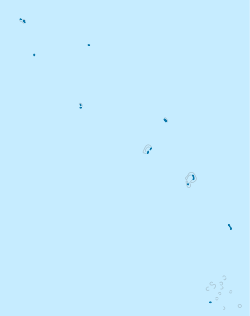| Location | off the northern shore of Nanumanga |
|---|---|
| Region | Tuvalu in western Polynesia |
| Coordinates | 6°16′7.32″S176°19′15″E / 6.2687000°S 176.32083°E |
The Caves of Nanumanga or Nanumanga Fire Caves are an underwater cave off the northern shore of Nanumanga, Tuvalu, in western Polynesia. It was discovered by two scuba divers in 1986. [1]
